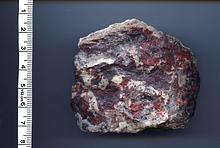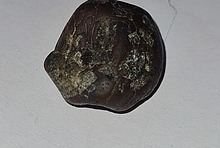Home PageAbout MindatThe Mindat ManualHistory of MindatCopyright StatusWho We AreContact UsAdvertise on Mindat
Donate to MindatCorporate SponsorshipSponsor a PageSponsored PagesMindat AdvertisersAdvertise on Mindat
Learning CenterWhat is a mineral?The most common minerals on earthInformation for EducatorsMindat ArticlesThe ElementsThe Rock H. Currier Digital LibraryGeologic Time
Minerals by PropertiesMinerals by ChemistryAdvanced Locality SearchRandom MineralRandom LocalitySearch by minIDLocalities Near MeSearch ArticlesSearch GlossaryMore Search Options
The Mindat ManualAdd a New PhotoRate PhotosLocality Edit ReportCoordinate Completion ReportAdd Glossary Item
Mining CompaniesStatisticsUsersMineral MuseumsClubs & OrganizationsMineral Shows & EventsThe Mindat DirectoryDevice SettingsThe Mineral Quiz
Photo SearchPhoto GalleriesSearch by ColorNew Photos TodayNew Photos YesterdayMembers' Photo GalleriesPast Photo of the Day GalleryPhotography
╳Discussions
💬 Home🔎 Search📅 LatestGroups
EducationOpen discussion area.Fakes & FraudsOpen discussion area.Field CollectingOpen discussion area.FossilsOpen discussion area.Gems and GemologyOpen discussion area.GeneralOpen discussion area.How to ContributeOpen discussion area.Identity HelpOpen discussion area.Improving Mindat.orgOpen discussion area.LocalitiesOpen discussion area.Lost and Stolen SpecimensOpen discussion area.MarketplaceOpen discussion area.MeteoritesOpen discussion area.Mindat ProductsOpen discussion area.Mineral ExchangesOpen discussion area.Mineral PhotographyOpen discussion area.Mineral ShowsOpen discussion area.Mineralogical ClassificationOpen discussion area.Mineralogy CourseOpen discussion area.MineralsOpen discussion area.Minerals and MuseumsOpen discussion area.PhotosOpen discussion area.Techniques for CollectorsOpen discussion area.The Rock H. Currier Digital LibraryOpen discussion area.UV MineralsOpen discussion area.Recent Images in Discussions
Mineralogical ClassificationXenon Oxide, XeO2, a mineral?
4th Mar 2011 20:05 UTCJeff Weissman Expert
abstract: The missing Xe(IV) oxide, XeO2, has been synthesized at 0 °C by hydrolysis of XeF4 in water and 2.00 M H2SO4(aq). Raman spectroscopy and 16/18O isotopic enrichment studies indicate that XeO2 possesses an extended structure in which Xe(IV) is oxygen bridged to four neighboring oxygen atoms to give a local square-planar XeO4 geometry based on an AX4E2 valence shell electron pair repulsion (VSEPR) arrangement. The vibrational spectra of Xe16O2 and Xe18O2 amend prior vibrational assignments of xenon doped SiO2 and are in accordance with prior speculation that xenon depletion from the Earth’s atmosphere may occur by xenon insertion at high temperatures and high pressures into SiO2 in the Earth’s crust.

4th Mar 2011 22:02 UTCAlbert Mura
5th Mar 2011 00:50 UTCJeff Weissman Expert

5th Mar 2011 02:26 UTCAndrew G. Christy Manager
First, a recommendation re. references, namely, to include authors and article title, which in this case were:
David S. Brock and Gary J. Schrobilgen (2011) "Synthesis of the Missing Oxide of Xenon, XeO2, and Its Implications for Earth’s Missing Xenon."
article is only in press/published online at the moment, so journal volume# and page## will appear down the track.
The main news is that the authors have actually made and unambiguously characterised a new compound, XeO2, for the first time,
They are aware of the "missing Xe" problem, and try to link the two. Various plusses and minuses emerge.
1. Evidently, from the citations in the text, there is a small industry out there of people doing calculations trying to put Xe into SiO2 crystal structures. A more geologically/solid-state oriented paper would take pains to state pressure, temperature, structure state of SiO2 and Xe content. All that I can glean without looking up a lot of refs is that "high P and T" are relevant to the Earth's crust (i.e, neither is actually very high by geological standards), the SiO2 phase being considered is therefore quartz, and that one remarkable high Xe content of 2.2% is quoted.
2. The authors point out the implausibility of Xe8+ replacing Si4+ in SiO2, and plug the idea of Xe4+. I agree with them on bond valence and charge balance grounds, and also agree that Xe4+ will not go on the Si tetrahedral site but will find a square-planar interstitial position instead. This can be charge balanced by a missing Si at time of growth, and does not imply that any specific redox reaction occurs in which Xe gas reduces SiO2 silicon to the element. The latter reaction ever becoming energetically favourable is highly unlikely, and the authors' speculations on it are a little bizarre.
3. OK, so quartz can accommodate a fair amount of Xe in solid solution under high P and T from calculations. Realising this in practice would presumably need forcing conditions of Xe partial pressure and redox (highly oxidising conditions to drive Xe0 up to Xe4+). The deep crust is not normally very oxidising, and even if 90% of the Xe were not missing, it is still rare, so I suspect that the equilibrium content of Xe in deep quartzes is actually much, much lower than 2.2%. Nobel gas geochemists must have some data already.
4. I have not attempted to quantify this, but it is more likely that Xe is distributed at very low concentrations, in a wide range of silicates (not just quartz) through the much greater volume of crust PLUS mantle. Note that quartz itself is not stable through most of this volume.
5. Even if Xe were common, it is vanishly unlikely that a phase as reactive and endothermic as XeO2 would ever occur as a mineral. Much more stable compounds of common elements, like sodium hydroxide or potassium permanganate, do not. But when a rarer element goes readily into solid solution with a commoner element, it reduces the chances still further! Note that gallium and germanium are not massively uncommon elements, but make very few minerals of their own: they are mainly dispersed at low concentrations, replacing Al and Si, and there are few geological situations in which they become separated/concentrated up sufficiently to make their own compounds.

5th Mar 2011 03:04 UTCFred A. Schuster
It's a Gas!
6th Mar 2011 15:30 UTCJeff Weissman Expert
6th Mar 2011 15:50 UTCDavid Von Bargen Manager
http://resources.metapress.com/pdf-preview.axd?code=p27g2pk3m2553212&size=largest

16th Mar 2011 20:58 UTCAndrew G. Christy Manager

6th Apr 2011 20:31 UTCspera

3rd Apr 2012 03:08 UTCDr. David Brock
I was the primary author of the article in question. I happened to come across this discussion and it caught my attention because it is one of the few discussions that look at the article scientifically. To answer Mr. Weissman's question, no, we are not proposing XeO2 as a mineral. It is extremely unstable and decomposes even at -78 oC over a few days. In fact, I must admit, initially I was skeptical that it could be incorporated into a quartz lattice at all as was proposed in a previous article reported in Science and was only convinced of the "plausibility" (I stress that I am not saying it DOES substitute but that it is possible) based on quantum chemical calculations. However, unlike spera suggested, DFT calculations are not suitable for these systems. DFT gives unreliable energies when large atoms like Xe are involved and require ab initio calculations instead. You can look at many of my (and my previous supervisor Dr. Schrobilgen's) work relating to noble-gas systems.
We were lucky enough to avoid having to carry out such calculations because they have already been done. See M. I. J. Probert J. Phys. Condens. Matter 2010, 22, 1. which is referenced in our paper. As stated in our paper, this computational paper, and as Andrew has pointed above, Xe insertion into interstitial spaces is favourable under all conditions and does not alter its oxidation state. However, this computational paper also revealed that under the temperatures and pressures suggested in the Science paper Xe substitution for Si are energetically neutral. This would suggest that Xe is indeed oxidized and Si reduced. However, this is not to say that the silicon itself oxidizes the Xe. What the author suggested is that the process occurs in a two-step process where Si is removed from the lattice leaving behind peroxide linkages followed by Xe insertion. Xe is presumably oxidized by the highly oxidative peroxide linkages. Looking at the thermodynamics of this process, also considered in our paper, it must be that the pressure/volume work (entropy) force overcomes the enthalpy of the reaction. In any case, the square planar local environment puts a strain on the lattice and you cannot incorporate two Xe atoms anywhere near each other in the lattice. So no, you won't find XeO2 mineral anywhere.
While our research is primarily of a fundamental nature and we were very excited and more focused on the novelty of the missing oxide of Xe (XeO3 and XeO4 are known and XeO is shown computationally to be unstable), we found the prospect of Xe incorporation into quartz puzzling. I had to do a lot of background research into the geochemistry, since admittedly it is not my strong suit, but from a chemical standpoint, although i cannot say with 100% confidence they DID substitute Xe for Si in quartz, the evidence they reported is not in contrast with what we observed for pure XeO2.
Anyways, thanks for the interest in the article and keep up with the great science questions and drive.
Regards,
Dr. Brock




Mindat.org is an outreach project of the Hudson Institute of Mineralogy, a 501(c)(3) not-for-profit organization.
Copyright © mindat.org and the Hudson Institute of Mineralogy 1993-2024, except where stated. Most political location boundaries are © OpenStreetMap contributors. Mindat.org relies on the contributions of thousands of members and supporters. Founded in 2000 by Jolyon Ralph.
Privacy Policy - Terms & Conditions - Contact Us / DMCA issues - Report a bug/vulnerability Current server date and time: April 18, 2024 14:15:24
Copyright © mindat.org and the Hudson Institute of Mineralogy 1993-2024, except where stated. Most political location boundaries are © OpenStreetMap contributors. Mindat.org relies on the contributions of thousands of members and supporters. Founded in 2000 by Jolyon Ralph.
Privacy Policy - Terms & Conditions - Contact Us / DMCA issues - Report a bug/vulnerability Current server date and time: April 18, 2024 14:15:24











